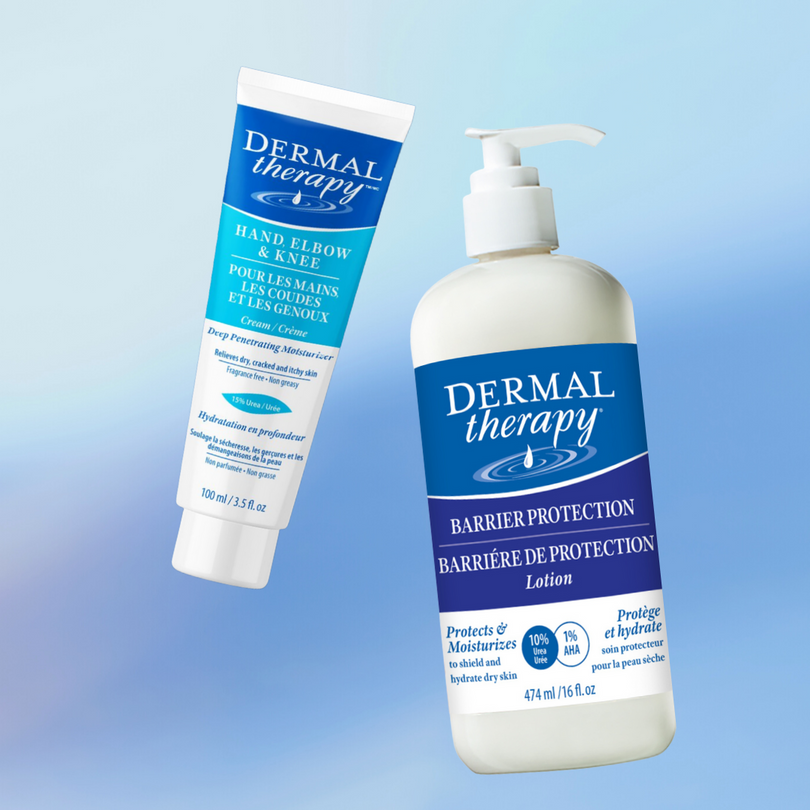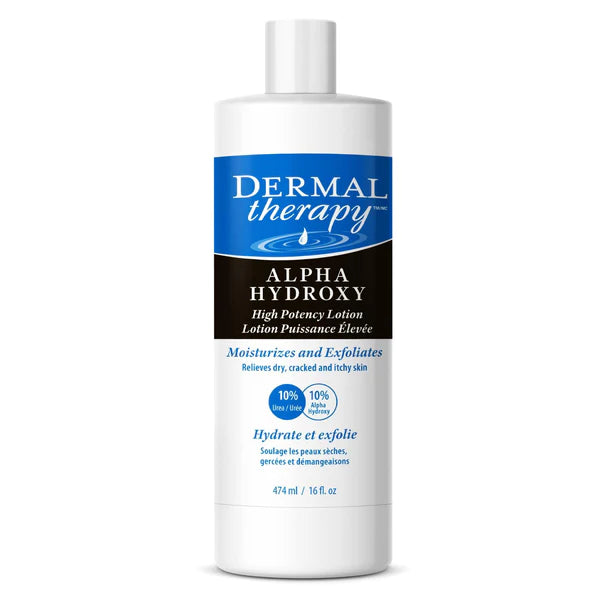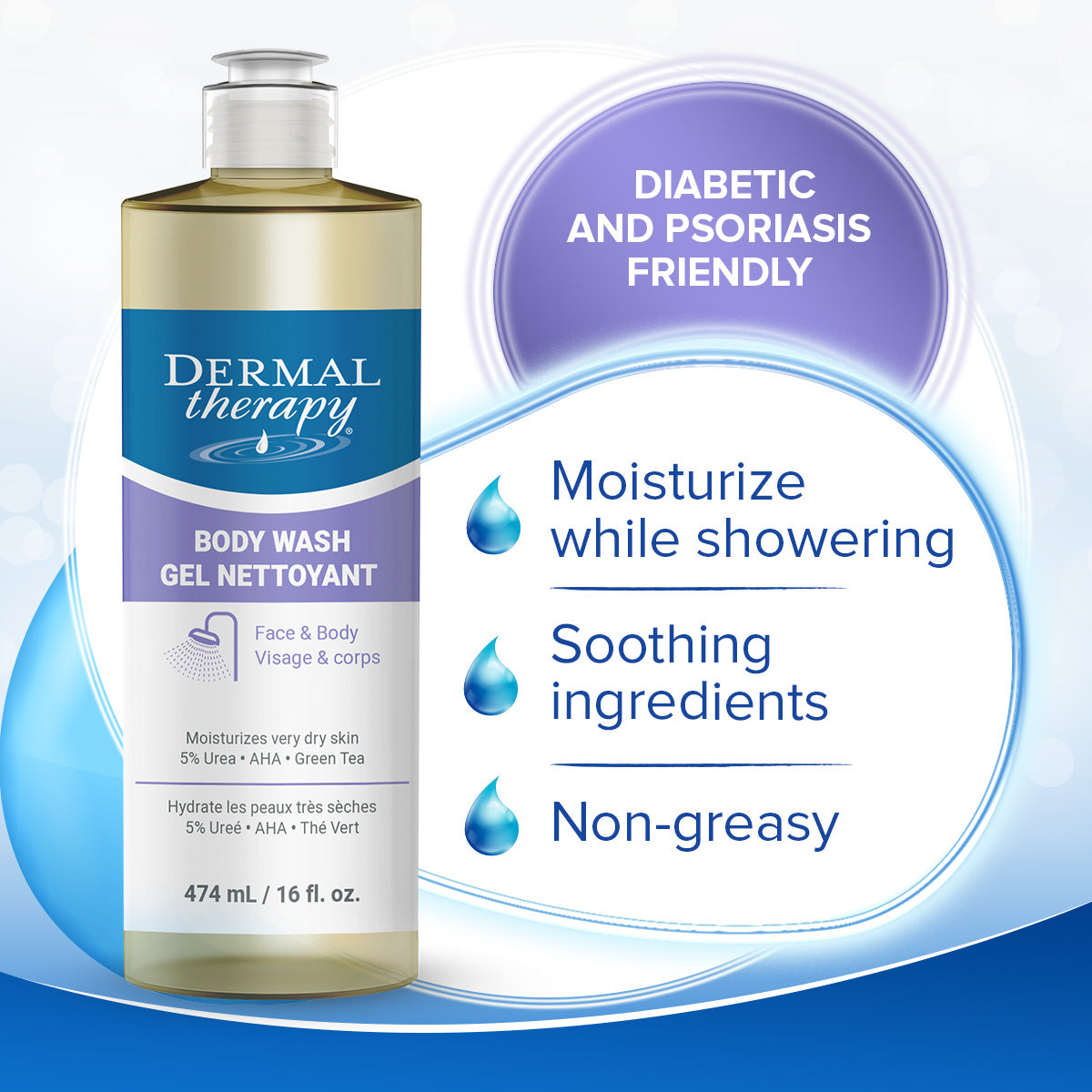
Why Is Diabetes Associated with Poor Skin Health?
There are several reasons why diabetes is connected with poor skin health.
- Diabetes is linked to thickening of the skin.
- Diabetes leads to reduced blood circulation to the skin (microangiopathy).
- Increased frequency of urination reduces the moisture available for the skin.
- Researchers believe that the body may actually rob the skin of moisture to eliminate glucose from the tissue.
Diabetes and Dry Skin Symptoms
The first symptoms of compromised skin health are often dry, scaly skin that can appear anywhere on the body. Most commonly dry skin from diabetes affects the extremities including the legs, feet, knees, elbows and hands.
Dry feet, dry skin on legs, and cracked heels are common areas that those with diabetes suffer from.
Because the skin is dryer and often thicker, the blood circulation is reduced, and moisture is ultimately lost; the skin is less supple and cracks appear. These cracks open the door for bacteria, viruses and fungi to enter your body.
If not properly treated, these cracks become open sores, or worse, infections.
Another unfortunate side-effect of diabetes is that the skin is slower to heal. So not only are you more prone to skin infection, but once the infection has occurred you now struggle with healing it.
Why Do Diabetics Have a Slower Healing Rate?
- Reduced blood flow to the skin
- Higher blood glucose which supports bacterial growth
- Slower metabolic rate
- Thicker skin
- Let’s unpack diabetes and thicker skin.
Imagine skin as a protective layer akin to a well-laid clay surface. In its normal state, it forms a sturdy barrier that prevents infections; it is a smooth expanse of well-packed clay. But what would happen if pebbles disrupted the otherwise smooth surface of clay?
It becomes thicker and uneven and is vulnerable and more suspectable to infections.
Want to ensure the best for your skin and your overall health? Take the skin health test below.
How Healthy Is Your Skin?
Take the following quick healthy skin test. They are six warning signs that your skin’s ability to resist infection has weakened.
Has your skin grown noticeably thicker?
- Has your skin become more yellow in colour?
- Is your skin noticeably drier?
- Is your skin becoming scaly?
- Is your skin cracking?
- Do you notice that minor wounds take longer to heal?
If you answered yes to any of these questions you should make improved skin care an immediate priority.
Talk to your physician or diabetes nurse educator for more information about skincare and what is the best foot moisturizer for diabetics to use.
Diabetics and Dry Skin Treatment
Healthy skin is supple, smooth and well-hydrated, or in other words, has plenty of moisture. It not only looks and feels better, but most importantly, healthy skin is your best defence against infection.
Before we suggest the best foot cream for diabetic feet, let’s look at some suggestions for good skin health.
Practice Good Diabetes Management
Fluctuations in blood glucose levels can stress your overall health, including your skin health.
Hydrate Your Body
Make sure you drink plenty of water.
Hydrate Your Skin
Use a moisture-replenishing lotion, ideally after bathing.
Dress Properly
Avoid excessive exposure to wind and sun by using hats, long sleeves and lotions to protect your skin. In winter, your skin is particularly vulnerable to dryness; extra care is needed.
Be Careful
Be extra careful to treat minor wounds such as blisters, cuts, abrasions and scratches with appropriate creams or ointments without delay.
Pay Special Attention to Your Feet
Your feet are particularly prone to problem skin and infections. Use a moisturizer that is formulated specifically for feet and heels. Never put moisturizers between your toes - it’s an area that already tends to trap heat and moisture, which creates a breeding ground for fungus and bacteria.
Dermal Therapy’s Diabetic Skin Bundle
This bundle contains everything you need for your diabetic dry skin. Use our Body Wash to help gently cleanse your skin and help retain moisture followed by our moisture-replenishing Extra Strength Body Lotion to lock-in otherwise lost moisture.
Our Finger Care Cream softens and soothes dry, cracked fingers. And for those who suffer from cracked heals because of diabetes, you’ll love our exquisite Heel Care Cream.
All of the above contain urea, a vital component to enhance your skin cells’ ability to attract, absorb, and retain moisture, effectively relieving severely dry skin. You can purchase all the above separately, but save when you buy as a bundle.
Sources:
Canadian Diabetes Association
Juvenile Diabetes Research Foundation International
Diabetes Public Health Resource - CDC
International Diabetes Federation
Diabetes Insight
Diabetes Symptoms.com
Focus on Diabetes.com






